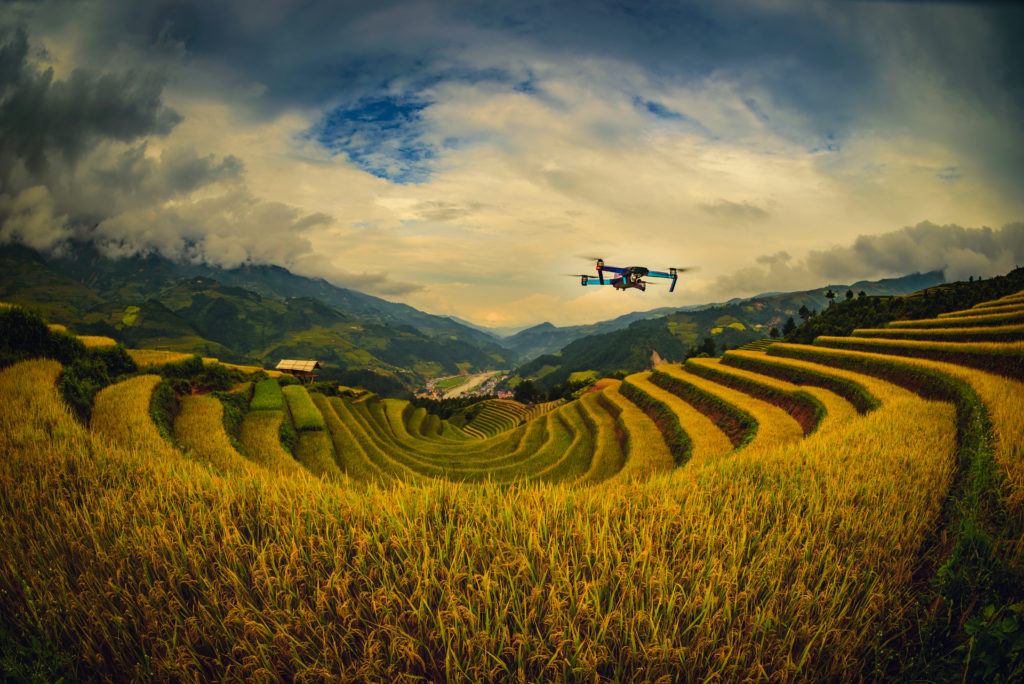
Drones have been increasing in popularity over recent years and now more people than ever are looking to the skies.
This unprecedented level of aerial freedom has allowed people to view the world in new and exciting ways, and also to provide further advancements in industries such as media and agriculture. However, it has also brought with it issues which are still being tackled by the authorities.
In December 2018, such issues became more evident than ever, as Gatwick Airport, ground to a halt as a result of drones reported to be flying dangerously close to the runway, posing a serious threat to the aircraft taking off and landing at the airport. This left hundreds of flights grounded and tens of thousands of people stuck at the airport.
In May 2018, the UK Department for Transport, in collaboration with the Civil Aviation Authority, enforced laws which governed the use of personal drones. These included a legal ceiling of 400 feet and a provision that they must not be flown within a kilometre of an airport boundary.
Even though those operating the drones which caused such havoc over the Christmas period were acting in contravention of the laws, those laws came under strict scrutiny. Following reviews of the law (which actually predated the incident), the Government announced amendments to the laws relating to personal drone use.
The additional 2019 drone rules
Extension of no-fly zones around airports:
– Pilots of drones will now have to stay outside a radius of 5 kilometres from any airport boundaries, which is to include further distances beyond the end of runways.
Introducing a “drone operator” register and test:
– As of 30th November 2019, operators of all drones between 250g and 20kg will be required to register their device with the Civil Aviation Authority and take an online safety test. The fine for not doing so will be up to £1,000.
Extension of Police powers over drones:
– Police will be able to, with a warrant, search a premises if there is suspicion a drone has been used to commit an offence. They will also be able to issue fixed penalty notices of up to £100 for minor drone related offences, such as not producing the relevant licence when asked, or not complying with police requests to land the drone.
What could be next?
There are further murmurings that the Government supports a minimum age restriction of 18 years of age to operate a drone. Similarly, further notification of drone use may be required, possibly having to notify authorities, as well as other users, where and when they plan to fly. Whilst this is not set in stone, it has been suggested that it could take the form of an app, which users may have to pay for.
How drones are used
Drones have developed by leaps and bounds over the last 10 years and now have a multitude of uses, from tiny toys controlled by a mobile phone to what are essentially giant, flying, ultra high-definition, infrared cameras. Consequently, they are becoming more prevalent in a variety of different industries.
At present, commercial drones are most commonly used for a assortment of digital media purposes, video recording for example, but are now regularly used for landscaping services, due to the ability to get an aerial view of the land. This has been further applied to the property and agriculture industries, to mention a few, to scope out potential border disputes, provide security to large areas of land and even to monitor the health of crops.
What is the impact?
As evidenced by the incident at Gatwick, drones, when misused, can create mayhem and even put lives at risk. These additional rules have been put in place as a consequence of this, but also as a result of common sense. However, an argument could be made to say that the issues which occurred at Gatwick would still have happened even if the 2019 regulations had been in force; the operators were in stark contravention of any rules.
These new rules are intended to increase drone user accountability and ensure the safety of flights, without compromising the security or privacy of others. They are also likely to have negative impacts on the use of drones in industries, such as those mentioned above, as it is possible that the costs for such commercial drone services will increase following the implementation of these additional regulations. Most notably, with new requirements such as having to register and potentially pay for certain elements, it is likely these charges will be passed on to the customer, meaning the prices for commercial services of drones will increase.
What is more, restrictions to flights, for example the height and location, may well mean that drones will not be able to be used in certain areas any longer. This is a particular concern for those in the agriculture industry, with farms located in the vicinity of airports no longer being able to make use of this new technology.
The true effects of the new rules on the popularity and use of drones is yet to become clear, however it is clear that the new rules will limit the ability to make the most a drones full capabilities.
